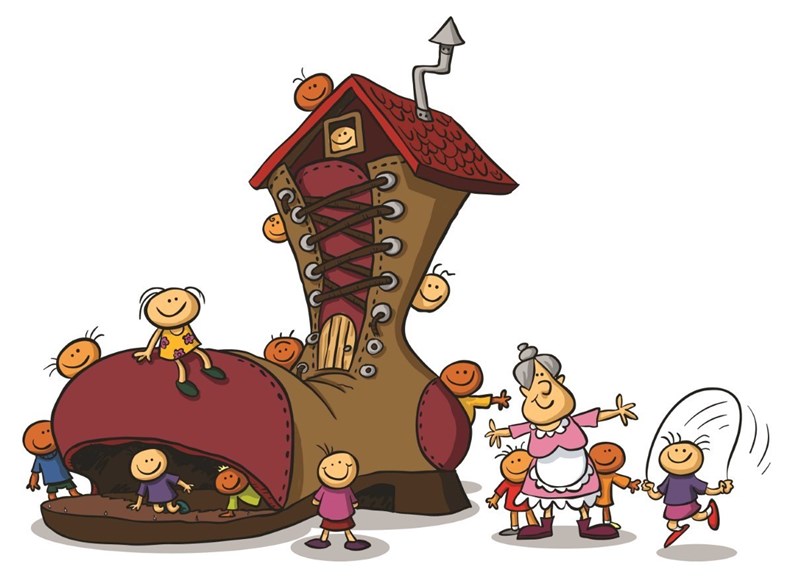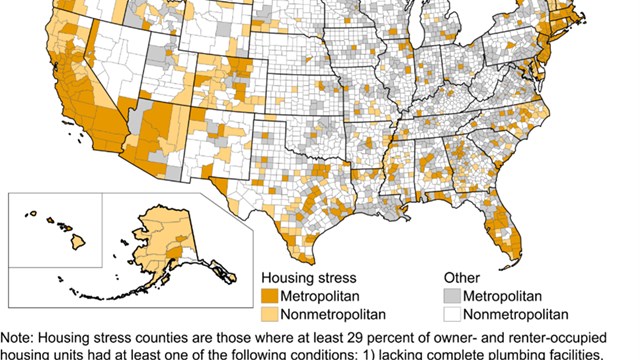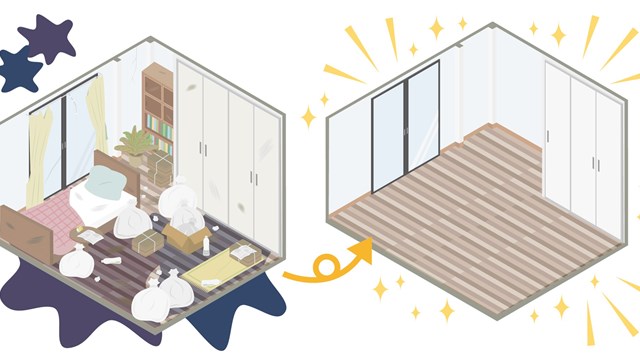Out of nowhere, someone is regularly using the parking space you have had for years. And strangers are appearing regularly in your building’s hallways, though you’re not sure where they belong or if they should even be there. Strangely, you hear children crying at all hours, though your community doesn’t allow kids under 16 to live there.
But who’s the culprit? It’s hard to tell, because unbeknownst to you, one of your neighbors recently moved several members of his extended family into his condo unit. Now, your quality of life is rapidly eroding, but it needn’t be so.
Packing Them In
There are many reasons why a condo owner could have multiple people living in his or her unit. Perhaps a child (or adult children with kids) has moved back home because of unemployment or divorce. Maybe other extended family members need a place to stay for a while because of illness or other unforeseen circumstances.
If an adult child moves home and stays in a spare room, it’s often not really anybody's business outside of that household. But if a condo unit is hosting more people than were intended to live there, it can become a concern for neighbors and for condo/HOA administrators.
Overcrowding can be hazardous and unhealthy if it gets out of hand or goes on too long. These crowding scenarios also can lead to security issues that aren’t necessarily easy to untangle. Ideally, all residents know the rules of their community and understand the limits on numbers of residents per apartment. Of course, people don’t always obey the community’s rules, which is why it’s up to boards and property managers to prevent and address this issue in their communities.
“Some of the possible scenarios that lead to overcrowding are really no different than regular one-family homes,” Stephen Elbaz, president of Esquire Management Corporation and a 30-year industry veteran, says. “A person who has a small apartment gets married and has children. That’s one possible scenario. You have the other possible scenario that we’re seeing in a bad economy where a married couple that had a house at one time, down-sized to an apartment then one of the kids moves back in. A lot of buildings that have a high population of immigrant residents, their relatives come from oversees. And until those relatives get established and set up jobs and apartments of their own, they go into the apartments. Those are probably the top three reasons [of overcrowding].”
People are still dealing with the residual effects of the recession. Add to that the devastation inflicted on homes, families and businesses by Superstorm Sandy, and it’s a recipe for disaster, or in this case, mass building overcrowding.
“We have heard several landlords stating that when the economy is down, it becomes very common for people to start taking on roommates that pay,” says J’Nell Simmons, director of marketing for LandlordsNY, a free and virtual network that provides resources to New York landlords and property managers exclusively. “This way, she continues, “they themselves get to keep their condo/apartment and get some relief by someone sharing the costs, etc. The Sandy devastation also caused this for obvious reasons. People just needed to find a place to live after their condos were destroyed.”
Some situations might be more acceptable to condo boards (and neighbors) than others, depending upon the community, Stephen M. Lasser, Esq., a partner with the Manhattan-based law firm of Barton LLP, says.
“Temporary situations such as relatives living with other relatives during a period of unemployment or while they are searching for other housing is more acceptable,” Lasser says.
An inordinate number of residents in a unit or units also can create tension among neighbors because residents pay for utilities like water as a common expense. If a few apartments seem to be using more than their fair share of the water, people could get justifiably angry.
Local municipalities usually have occupancy restrictions that are determined by the square footage in the unit. But often, a condo or co-op community’s occupancy restrictions are written into the condominium’s governing documents.
Legal occupancy limits are determined for a dwelling unit with two ends in mind: To comply with existing occupancy restrictions of the municipality in which the community is based and to fit the needs of the co-op/condo community’s residents.
These limits differ among municipalities, since some urban municipalities may allow higher numbers of people living in smaller units, and some suburban communities may have stricter regulations on how many folks can live in a condo unit or apartment.
Condos and HOAs can impose occupancy limits that differ from the city or town's limits, as long as they comply with existing laws. This means boards of such communities can choose to be stricter about how many people can live in a unit than the municipal law stipulates. Generally speaking, municipal laws state that no more than two people can live in a one-bedroom apartment, and no more than four people can live in a two-bedroom apartment; i.e., two people per bedroom, tops.
“The law In New York City is quite generous and permits one person per eighty square feet,” Lasser says. “In the event a unit owner violates the applicable local law, the board could impose fines or sue the owner and occupants for injunctive relief to compel their compliance with the law. “However,” he continues, “because there is no landlord-tenant relationship between a condominium association and its unit owners, the board will not be able to start an eviction proceeding in housing court. In addition, the local government agency with jurisdiction over housing code enforcement may have to determine that the local law is being violated before a court will consider the condominium’s claim to be ripe for judicial intervention.”
Minding Safety Issues
Various safety and health concerns can arise when an apartment unit or townhome is housing more than the legal number of occupants. To start, the presence of undocumented strangers on the property who are not known by management, and thus cannot be held accountable for their actions, decreases safety for all residents. Strangers on the property can do what they will and they also can bring in more strangers. After a while in such situations, strangers roaming the halls could become accepted by residents, though it could result in crimes such as burglary and rape.
In communities where everyone knows each other and keeps an eye out for their neighbors, adding outsiders to the mix who don’t know the neighbors or the rules could be a path to disaster. So while the issue of a new resident taking someone’s parking space may seem trivial, it might be of great importance to the 82-year-old lady who owns the space, which is located near the front door. Because of her inability to walk well, the lady needs a space close to the door, and making her park farther away could perhaps lead to her falling and breaking her hip.
One restriction for occupants is allowable for residential communities that are designated as 55-and-older communities: age limitations. Legally, such communities can prohibit residents’ adult children with kids from moving in.
Overcrowding can lead to unsanitary conditions, too. Occupancy limits are set partly to avoid situations where you have six people or more in a two-bedroom unit, for example. But having a higher density of occupants than allowed could lead to an unacceptably dirty unit, where dust, bags of refuse or odd smells make their way into the hallway. Having too many folks in a unit also can lead to too much stuff or a hoarding situation, which in and of itself can be a health or fire hazard.
Associations are designed with occupancy restrictions in mind. Increases over the maximum occupancy can result in unbudgeted expenses to the association, such as utility services and waste removal, and also can put increased wear-and-tear on parking lots and common areas.
Imagine a hallway or stairways being mobbed with residents during an emergency in which an evacuation must proceed smoothly and quickly. Added to the chaos of people trying to leave through the smoke from a fire, and the nervous cries of neighbors echoing through the building, you also have undocumented residents who don’t even know which way to evacuate.
The last thing any community needs during a crisis is a logjam of people impeding traffic down a hall or stairway, since such an obstacle could lead to people dying from smoke inhalation, getting trampled, or other hazards. Such disasters could occur because there are simply too many residents in the building.
Spotting Violators
“Love they neighbor” is an oft-quoted axiom, but it’s not so easy to practice when you don’t even know your neighbors or worse yet, there are too many of them. So what steps should a neighbor take if they suspect or know that a unit in their building is housing way too many people? Contact the manager, since it is his or her job to deal with the situation, not yours.
Depending upon the authority given to them in the governing documents, the manager may be able to cite the offending unit owner for having too many people living in the unit, or for having undocumented guests. Some communities put a limit on how long guests may stay, such as 30 or 60 days, but the rules could be waived for a situation in which the unit owner has a girlfriend or boyfriend regularly staying at the residence. Even so, the community’s governing documents may require that the friend (or any extra residents) register with the condo office so management knows who they are.
A soft-pedal approach is often the best way to confront the issue, experts say. The manager might just check with the unit owner to see what’s up with his or her unit.
“The first step should probably be confirming that the overcrowding is in fact occurring,” Lasser says. “The superintendent or other building staff can usually determine who is living in a unit and can confirm allegations of overcrowding to the board or management. “In addition,” he continues, “most condominium bylaws grant the board a right to access units. As a result, the board could instruct management or the building staff to access a unit to visually verify allegations of overcrowding. If suspicions are confirmed, I would recommend that the board send a non-threatening letter advising the unit owner that overcrowding unfairly burdens the building and inviting the unit owner to attend the next board meeting to discuss the situation in person. Assuming the unit owner meets with the board, the board should be able to determine whether it is a temporary situation and how many people are occupying the unit.”
“Of course,” Lasser continues, “if the overcrowding appears to rise to the level that it is a potential fire hazard then the board can send a letter demanding that the overcrowding cease immediately.”
If the extra residents need to vacate the unit, boards and managers in most communities will not help to find them new lodging. But if an overcrowding situation is a result of family emergency such as an illness, unemployment, divorce, etc., a condo board and/or management team can work with the unit owners to find a temporary solution, rather than just evicting everyone or litigating, which are two last-resort options.
“Boards will not help someone find alternative housing because they are not in the real estate business of finding people housing,” Elbaz says. “What they will do is ask the shareholder or the unit owner to sign an agreement where the board will allow this unauthorized condition to continue for a limited period of time.
“In my experience, [owners don’t ask managers for assistance finding alternative housing] because we are viewed as an adversary. So, what people typically do is they’ll call a local broker, but they’re reluctant to go to the management company because if their search is fruitless, then now the management company knows and they have that information,” he says.
Unexpected events and emergencies are bound to occur in life—board members and fellow residents understand that. So, if a situation arises requiring an owner to provide temporary housing to a friend or family member, residents should contact their board and management company immediately, Elbaz advises.
“Shareholders and unit owners would be well-advised to go to the management firm prior to this condition happening. In my opinion, it’s much better if the shareholder or unit owner goes to the board in advance of this person moving in as opposed to waiting to be caught. Usually, they’ll be a lot more willing to work with you if you go to them as opposed to a cat-and-mouse game.”
Jonathan Barnes is a freelance writer and frequent contributor to The Cooperator. Editorial Assistant Enjolie Esteve contributed to this article.







Leave a Comment